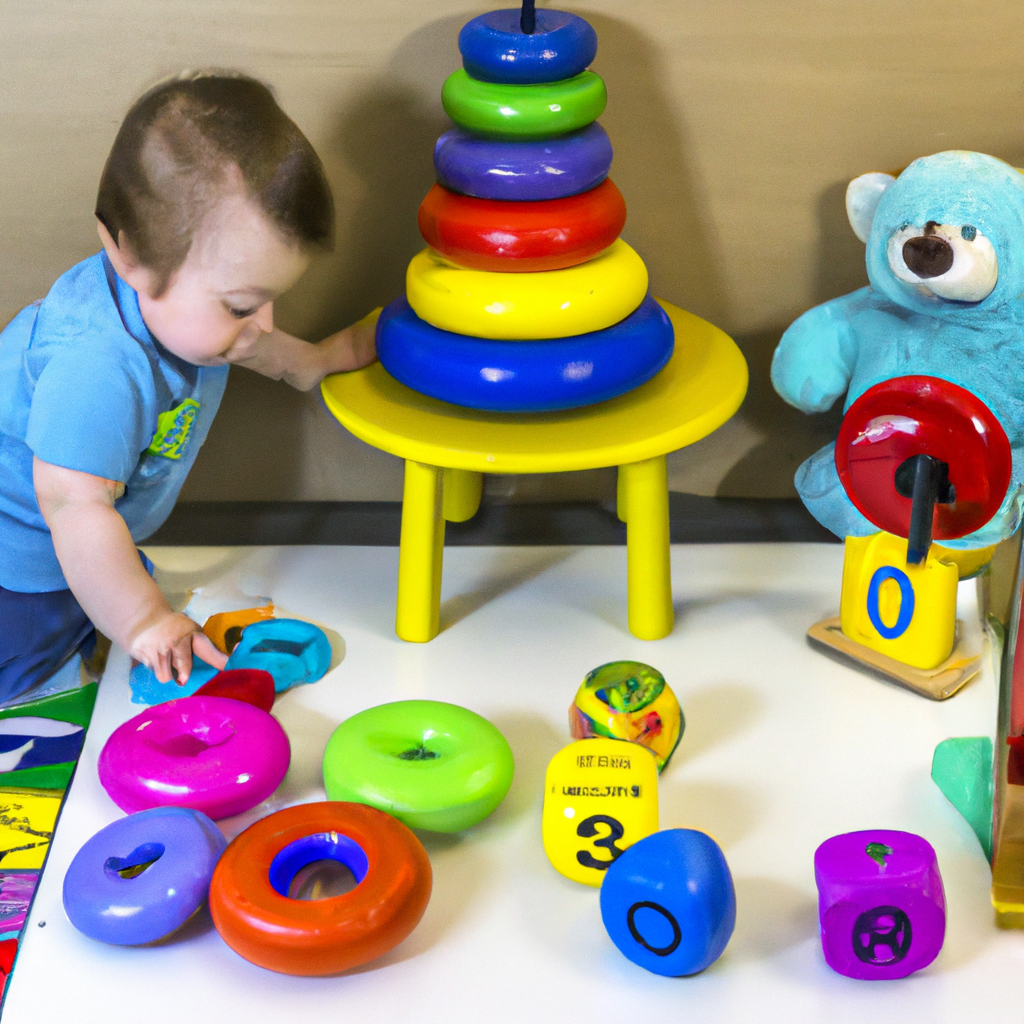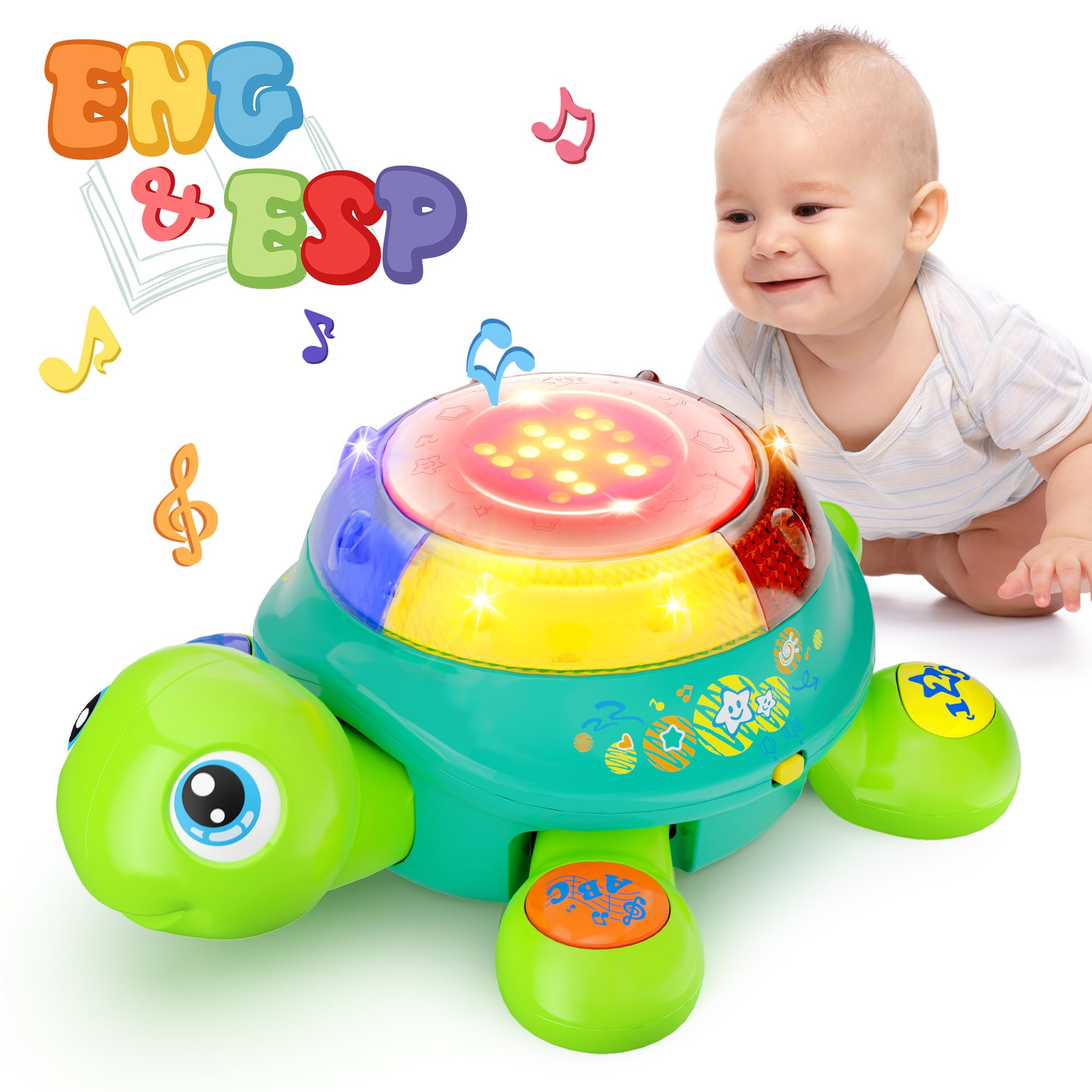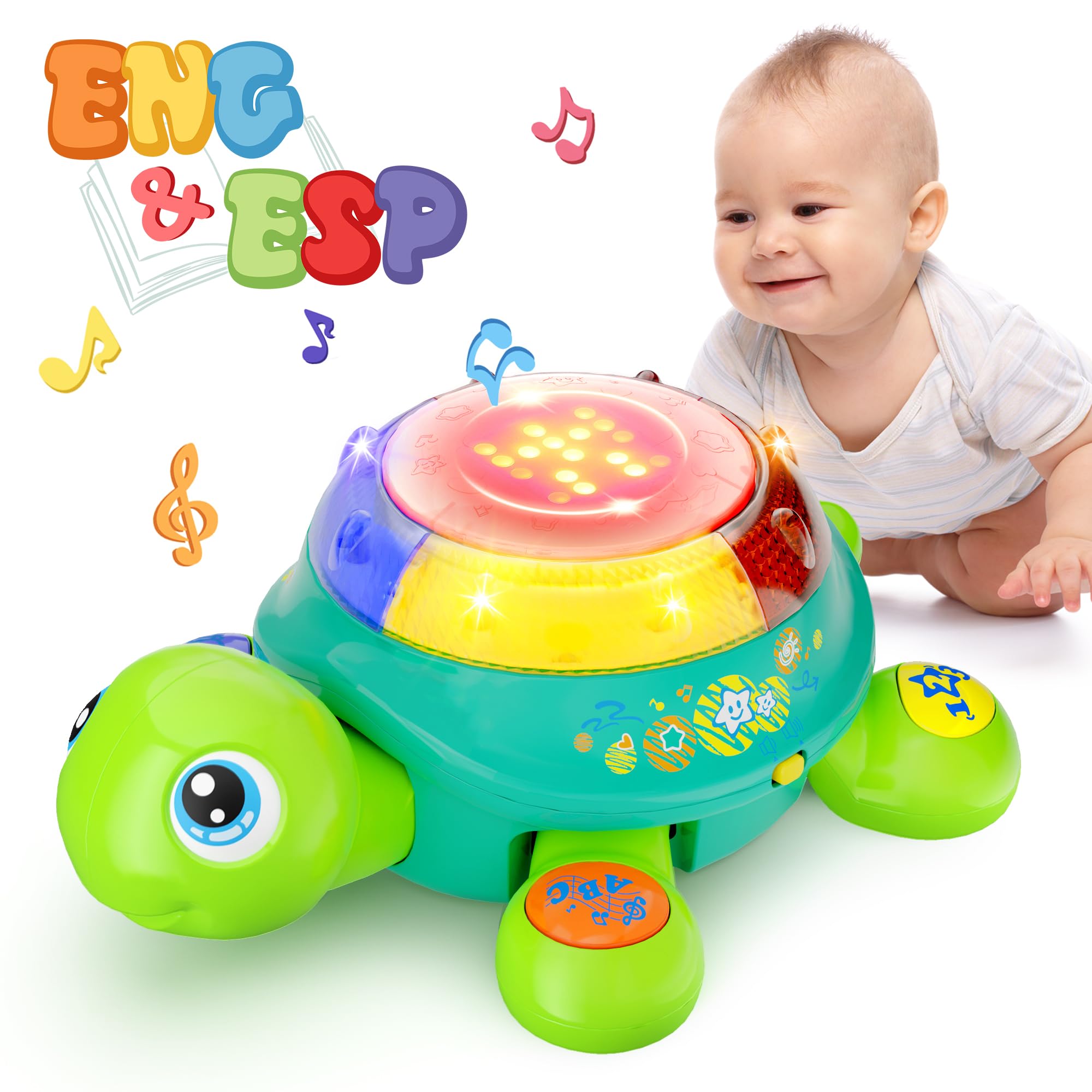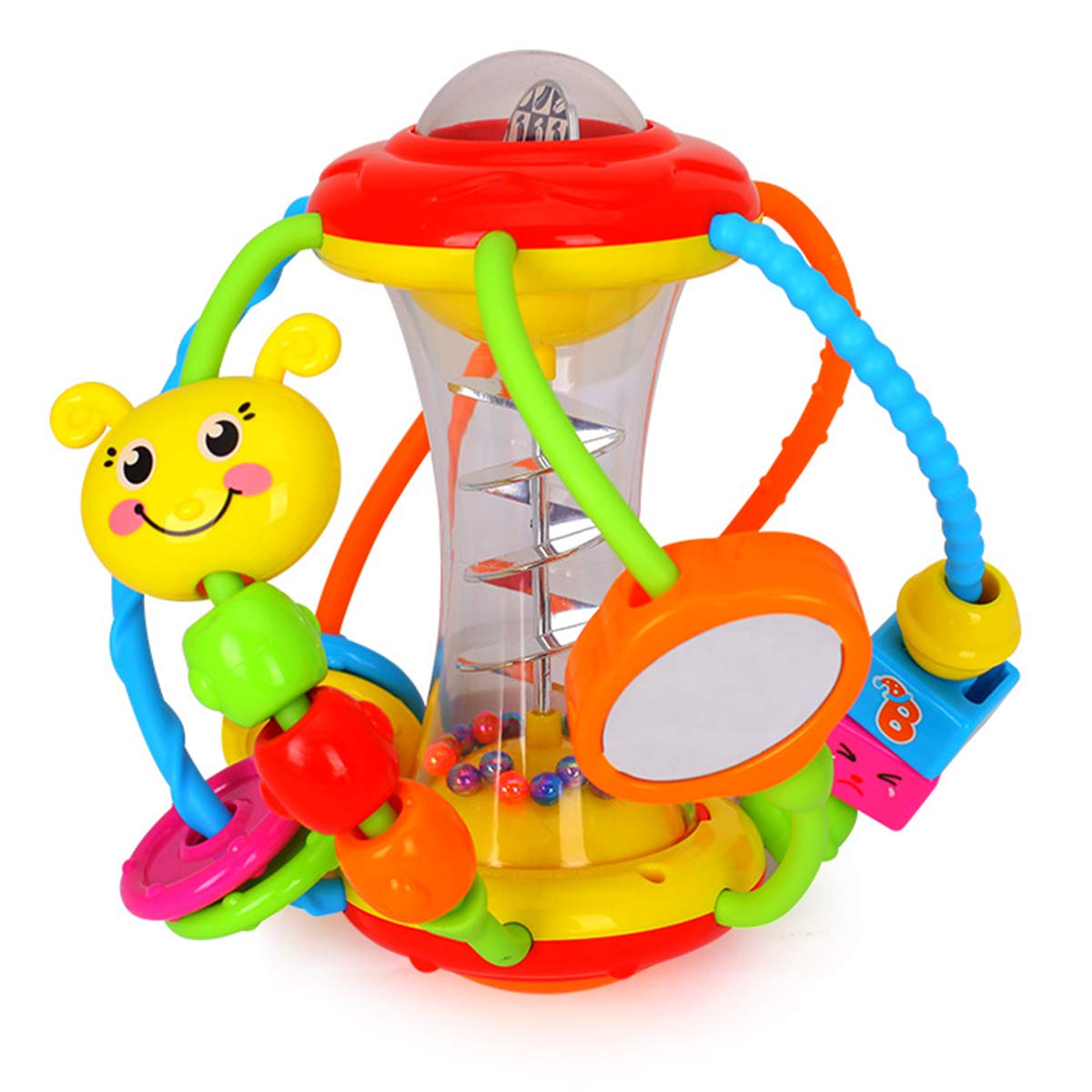Child Development
What Is Piaget’s Theory of Child Development

I am completely fascinated by the different theories that have greatly impacted our understanding of how young minds develop and learn as I delve into the intriguing world of child development.
One theory, in particular, stands out: Piaget’s theory of child development. This groundbreaking framework, developed by Swiss psychologist Jean Piaget, has provided a foundation for understanding the cognitive development of children.
Join me as we explore the key concepts, stages, and real-world applications of Piaget’s theory, and uncover the enduring legacy it has left on the field of child development.
Key Takeaways
- Piaget’s theory of child development focuses on the stages of cognitive development that children go through.
- The theory emphasizes the importance of sensory experiences in children’s understanding of the world.
- Piaget identified four stages of cognitive development: sensorimotor, preoperational, concrete operational, and formal operational.
- One of the key concepts of Piaget’s theory is the idea of cognitive adaptation, where children balance their existing knowledge with new information.
Piaget’s Background and Contributions
Piaget’s theory of child development is based on his background and contributions in the field. His educational philosophy focused on the idea that children actively construct their knowledge through interactions with their environment. His influence on psychology research has been profound, shaping our understanding of how children think and develop.
Jean Piaget was a Swiss psychologist who dedicated his career to studying the cognitive development of children. He believed that children go through distinct stages of development, each characterized by different ways of thinking and understanding the world. His research involved observing and interviewing children, allowing him to gain valuable insights into their thought processes.
Piaget’s educational philosophy emphasized the importance of hands-on, experiential learning. He believed that children learn best when they are actively engaged in the learning process, rather than passively receiving information. This approach has had a significant impact on education, influencing teaching practices that encourage exploration, discovery, and problem-solving.
Piaget’s work has also had a lasting influence on psychology research. His theories have provided a foundation for understanding how children’s thinking evolves over time and have shaped the way researchers study child development. By recognizing the importance of the child’s perspective and understanding the role of cognitive processes in development, Piaget revolutionized the field.
Transition: With an understanding of Piaget’s background and contributions, we can now delve into the key concepts and stages of his theory.
Key Concepts and Stages of Piaget’s Theory
In Piaget’s theory of child development, there are four key stages that describe the cognitive development of children.
The first stage is the sensorimotor stage, which spans from birth to around 2 years old and focuses on the development of sensory and motor abilities. During this stage, infants learn about the world through their senses and actions.
The next stage is the preoperational stage, which occurs from around 2 to 7 years old, and is characterized by egocentric thinking, symbolic representation, and an inability to understand conservation.
Sensorimotor Stage Overview
During the sensorimotor stage, infants develop their understanding of the world through their senses and motor activities. This stage, which lasts from birth to around 2 years old, is characterized by significant cognitive and physical advancements.
One key concept that emerges during this stage is object permanence. Infants begin to understand that objects continue to exist even when they are out of sight. This milestone is evident when a baby looks for a toy that has been hidden or reaches for an object that is partially covered.
Additionally, the sensorimotor stage is crucial for motor skills development. Infants gradually gain control over their movements and learn to manipulate objects using their hands. They become more coordinated and able to explore their environment through crawling, walking, and reaching.
As the sensorimotor stage comes to a close, children transition into the next stage, known as the preoperational stage, where they acquire new characteristics and abilities.
Preoperational Stage Characteristics
You’re now in the preoperational stage, where you’ll start to develop symbolic thinking and language skills. This stage, which typically occurs between the ages of two and seven, is a crucial period of cognitive development. During this time, children begin to use symbols to represent objects and ideas, which allows them to engage in imaginative and pretend play.
Here are a couple of ways that these developments can evoke emotions in the audience:
-
Vivid Imaginations: Children in the preoperational stage often have vivid imaginations, which can be a source of joy and wonder for both themselves and those around them. Their ability to create elaborate imaginary worlds can evoke a sense of awe and excitement.
-
Inventive Language: As language skills expand, children in this stage might create their own words or phrases to express their thoughts and feelings. This creative use of language can be endearing and humorous, evoking feelings of warmth and amusement.
As children progress through the preoperational stage, they will eventually reach the concrete operational stage, where they will acquire new cognitive milestones.
Concrete Operational Stage Milestones
Now that you’ve reached the concrete operational stage, you’ll notice an improvement in your ability to perform mental operations and think logically about concrete objects and events. During this stage of cognitive development in middle childhood, you’ll find that you can solve problems more effectively and understand concepts such as conservation and reversibility.
However, there are still some limitations to consider. For example, abstract or hypothetical thinking may still be challenging, and you may struggle with understanding concepts that are not directly related to your personal experiences. It’s important to remember that cognitive development is a gradual process, and while you’ve made significant strides in your thinking abilities, there is still more growth to come.
As we move into the next section about the sensorimotor stage: birth to 2 years, we will explore the earliest stage of Piaget’s theory, where infants learn about the world through their senses and actions.
Sensorimotor Stage: Birth to 2 Years
In the sensorimotor stage of development, children from birth to two years old experience significant cognitive and physical growth.
One key concept during this stage is object permanence, which refers to a child’s understanding that objects continue to exist even when they are out of sight.
As their motor skills develop, children reach important milestones such as grasping objects, sitting up, crawling, and eventually walking. These milestones are crucial for their physical development and also contribute to their understanding of the world through sensory experiences.
Object Permanence Concept Explained
The concept of object permanence is when a child realizes that objects continue to exist even when they are not in sight. According to Piaget’s stages of development, this cognitive milestone typically occurs during the sensorimotor stage, which spans from birth to around 2 years of age.
To investigate object permanence, various experiments have been conducted. One famous experiment involves hiding a toy under a blanket and observing the child’s reaction. In the early months, infants do not search for the hidden object and often act surprised when it reappears. However, as they develop object permanence, infants begin to actively search for the hidden toy once it is out of their sight.
This milestone in cognitive development sets the stage for further exploration and understanding of the world. As children progress in their cognitive development, they also experience milestones in their motor skills development.
Motor Skills Development Milestones
As you continue to grow and explore the world around you, you will reach important milestones in your motor skills development. These milestones include the development of both fine motor skills and gross motor skills. Fine motor skills involve the use of smaller muscles, such as those in the hands and fingers, while gross motor skills involve the use of larger muscles, such as those in the arms and legs.
Here is a visual representation of the milestones in motor skills development:
| Fine Motor Skills | Gross Motor Skills |
|---|---|
| Grasping objects | Rolling over |
| Picking up small objects | Sitting up |
| Scribbling and drawing | Crawling |
| Using utensils for eating | Walking |
These milestones are important indicators of a child’s physical development and can vary in their timing and sequence. By achieving these milestones, children are able to engage more fully with their environment and explore the world around them. Understanding through sensory experiences plays a crucial role in their overall cognitive development.
Understanding Through Sensory Experiences
As children develop, they begin to understand the world around them through sensory exploration. This process of using their senses to gather information is crucial for their cognitive development. According to Piaget’s theory, children go through different stages of cognitive development, and during this stage, sensory experiences play a vital role.
Here are three ways in which sensory exploration contributes to cognitive development:
-
Enhances memory and attention: Engaging in sensory activities helps children develop their memory and attention span, as they learn to focus on specific stimuli and remember their experiences.
-
Promotes problem-solving skills: Sensory exploration allows children to encounter different textures, sounds, and smells, helping them develop problem-solving skills as they try to make sense of their sensory experiences.
-
Stimulates brain development: Sensory play stimulates the brain, encouraging neural connections and promoting the growth of important cognitive functions.
Transitioning into the subsequent section about the preoperational stage, we now move on to the next phase of Piaget’s theory: the period from 2 to 7 years old.
Preoperational Stage: 2 to 7 Years
You’re currently in the preoperational stage of child development, which typically occurs between the ages of 2 and 7 years. During this stage, children engage in symbolic thinking and symbolic play, as they begin to represent objects and ideas through words, drawings, and pretend play.
Symbolic thinking is the ability to mentally represent objects and events that are not physically present. Children in this stage may use one object to represent another, such as using a block as a phone or pretending a stuffed animal is a baby. Symbolic play, also known as pretend play, allows children to explore different roles and scenarios, enabling them to develop their imagination and creativity.
In the preoperational stage, children’s thinking is still largely egocentric, meaning they struggle to take the perspective of others. They may also exhibit centration, where they focus on only one aspect of a situation and ignore others. Additionally, children in this stage tend to have difficulty with conservation tasks, such as understanding that the quantity of a substance remains the same even if its appearance changes.
As children reach the end of the preoperational stage, they begin to acquire more logical thinking abilities, marking the transition into the concrete operational stage, which spans from 7 to 11 years.
Concrete Operational Stage: 7 to 11 Years
By the age of 7, my thinking becomes more logical, and I am able to take into account multiple aspects of a situation. This marks the beginning of the Concrete Operational Stage in Piaget’s theory of child development.
During this stage, there are several key developmental milestones and advancements in cognitive development that occur.
In the Concrete Operational Stage, I am able to think more logically and understand conservation, which means that I understand that even if the appearance of something changes, its quantity remains the same. Additionally, I begin to understand the concept of classification, where objects can be grouped together based on their similarities and differences.
Furthermore, during this stage, I start to develop the ability to think in a more organized and systematic way. I can solve problems using mental operations, which means I can think through a problem in my mind without physically manipulating objects. This allows me to understand cause and effect relationships and engage in more complex problem-solving tasks.
As I transition into the subsequent stage, the formal operational stage, my thinking continues to develop and become even more advanced.
Formal Operational Stage: 11 Years and Beyond
During the formal operational stage, my thinking becomes even more advanced and I am able to engage in abstract and hypothetical reasoning. This stage, according to Piaget’s stages of cognitive development, typically occurs around the age of 11 and beyond.
Abstract reasoning allows me to think about concepts and ideas that are not necessarily tied to concrete examples. This kind of thinking is crucial for logical thinking, problem solving skills, and metacognition.
Hypothetical thinking is another important aspect of the formal operational stage. It enables me to consider hypothetical situations and explore various possibilities. This kind of thinking is essential for developing deductive reasoning, scientific reasoning, and critical thinking skills. I can now use logical principles to evaluate and analyze different scenarios.
Cognitive flexibility is a key characteristic of the formal operational stage. It refers to the ability to switch between different perspectives and adapt one’s thinking to new information. This flexibility allows me to approach problems from different angles and consider multiple solutions.
In conclusion, during the formal operational stage, my thinking becomes more advanced as I engage in abstract and hypothetical reasoning. This stage is crucial for developing logical thinking, problem solving skills, metacognition, deductive reasoning, scientific reasoning, critical thinking, and cognitive flexibility.
As I transition to the next section about ‘assimilation and accommodation,’ I continue to build upon these cognitive abilities in order to further refine my understanding of the world.
Assimilation and Accommodation
In my experience studying child development, I’ve come across the concept of the cognitive adaptation process. This process refers to how individuals adjust their thinking and understanding of the world in response to new information.
The cognitive adaptation process involves a delicate balance between assimilation and accommodation. Assimilation is when new information is incorporated into existing mental structures. On the other hand, accommodation is when existing mental structures are modified to fit new information.
The interplay between assimilation and accommodation is crucial for cognitive growth and development. It allows individuals to expand their understanding of the world and adapt their thinking to incorporate new knowledge.
Cognitive Adaptation Process
You’ll notice that in Piaget’s theory of child development, the cognitive adaptation process is a key element. This process involves two important processes: assimilation and accommodation. Assimilation occurs when we incorporate new information into existing cognitive schemas. Accommodation, on the other hand, happens when we modify our existing schemas to fit new information. These processes are crucial for cognitive development as they allow us to make sense of the world around us and adapt to new experiences.
To understand the importance of cognitive adaptation, let’s take a look at the following table:
| Cognitive Schemas | Adaptation Processes |
|---|---|
| Mental frameworks that help us organize and interpret information. | The processes of assimilation and accommodation. |
As children grow and encounter new situations, they constantly engage in the cognitive adaptation process. By actively constructing and modifying their schemas, they are able to balance old knowledge with new experiences, leading to cognitive growth and development.
Moving on to the next section, we will explore how children achieve this balance without explicitly taking a step.
Balancing Old and New
As children grow, they constantly engage in the cognitive adaptation process to balance old knowledge with new experiences. This process is essential for their overall cognitive development and involves assimilation and accommodation.
New research in the field of child development has shed light on the importance of this balancing act and its impact on children’s learning and understanding. Modern applications of Piaget’s theory have highlighted the significance of providing children with opportunities to explore and interact with their environment in order to expand their knowledge base.
Through this process, children are able to integrate new information into their existing schemas, allowing them to build a more comprehensive understanding of the world around them. This development lays the foundation for the subsequent section on object permanence and conservation, where children’s understanding of these concepts continues to evolve.
Object Permanence and Conservation
Don’t forget, object permanence and conservation are important concepts in Piaget’s theory of child development.
Object permanence refers to a child’s understanding that objects continue to exist even when they are out of sight. This concept is typically developed around 8 to 12 months of age. Before this stage, infants believe that objects cease to exist when they are no longer visible. However, as they grow and develop, they begin to realize that objects have a permanent existence. This understanding allows them to engage in more complex play and exploration.
Conservation, on the other hand, involves the understanding that certain properties of an object, such as its quantity or volume, remain the same despite changes in its appearance. For example, a child who has not yet grasped conservation may believe that a tall, narrow glass contains more liquid than a short, wide glass, even if the amount of liquid is the same. It is not until around the age of 7 that children fully grasp the concept of conservation.
These concepts of object permanence and conservation are crucial in Piaget’s theory of child development because they represent important cognitive milestones. They demonstrate the child’s increasing ability to understand and manipulate their environment. These concepts lay the foundation for more advanced cognitive abilities, such as egocentrism and perspective-taking, which will be discussed in the next section.
Egocentrism and Perspective-Taking
To understand egocentrism and perspective-taking, it’s important to recognize that children go through a stage where they struggle to see things from others’ points of view. During this stage, known as the preoperational stage, children are egocentric and have difficulty understanding that others may have different thoughts, beliefs, or perspectives than their own. This egocentrism is a key concept in Piaget’s theory of child development.
Here are some important points to consider about egocentrism and perspective-taking:
- Children’s egocentrism is not a result of selfishness or lack of empathy, but rather a cognitive limitation in their ability to understand others’ perspectives.
- Egocentrism gradually decreases as children develop a theory of mind, which is the ability to understand that others have thoughts, beliefs, and desires different from their own.
- Perspective-taking, the ability to understand and consider others’ viewpoints, plays a crucial role in social development.
- Perspective-taking helps children develop empathy, cooperation, and effective communication skills.
Understanding egocentrism and perspective-taking is essential in understanding the social and cognitive development of children. It sets the stage for the subsequent section on the role of play in cognitive development, as play provides opportunities for children to practice perspective-taking and develop their theory of mind.
The Role of Play in Cognitive Development
Playing is an essential part of your cognitive development because it provides opportunities for you to explore, learn, and practice important skills. According to Piaget’s theory of child development, play has a crucial role in fostering cognitive growth.
Through play, children engage in imaginative activities that allow them to develop their cognitive abilities, such as problem-solving, abstract thinking, and creativity. For example, when children engage in pretend play, they use their imagination to create scenarios and solve problems within those scenarios. This helps them develop their cognitive flexibility and problem-solving skills.
Additionally, play also provides opportunities for social interaction, which further enhances cognitive development. During play, children engage in social interactions with their peers, siblings, or adults. They learn to cooperate, negotiate, and communicate effectively with others. This social interaction promotes the development of important cognitive skills such as perspective-taking, empathy, and theory of mind.
Transitioning into the subsequent section about criticisms and limitations of Piaget’s theory, it is important to note that while play has a significant role in cognitive development, Piaget’s theory has faced criticisms and limitations.
Criticisms and Limitations of Piaget’s Theory
One major criticism of Piaget’s theory is that it may not account for the individual differences in cognitive development. While Piaget’s theory provides valuable insights into the stages of cognitive development, it is not without its limitations. Here are some of the criticisms and limitations of Piaget’s theory:
-
Cultural and Socioeconomic Bias: Piaget’s theory was largely based on observations of children from Western, middle-class backgrounds. This raises concerns about its applicability to children from different cultural and socioeconomic backgrounds.
-
Underestimation of Abilities: Critics argue that Piaget underestimated children’s abilities, particularly in the early stages of development. Research has shown that infants and young children are capable of more complex cognitive processes than Piaget suggested.
-
Lack of Individual Differences: Piaget’s theory does not adequately account for the wide variation in cognitive development among individuals. It fails to address why some children may progress through the stages at different rates or skip stages altogether.
-
Lack of Emphasis on Social Factors: Piaget’s theory focuses primarily on individual cognitive development and neglects the significant influence of social and cultural factors on children’s cognitive development.
These criticisms highlight the need for a more nuanced understanding of cognitive development that takes into account individual differences and sociocultural factors.
Transitioning into the subsequent section about Piaget’s impact on educational practices, it is important to consider how these limitations may have affected the implementation of his theory in the classroom.
Piaget’s Impact on Educational Practices
Piaget’s impact on educational practices can be seen in the emphasis placed on active learning and hands-on experiences in the classroom. In modern classrooms, educators strive to create an environment that aligns with Piaget’s theory of child development. This theory suggests that children construct knowledge through their own interactions with the world around them. Therefore, it is crucial to provide opportunities for students to engage in active learning experiences.
One way that Piaget’s theory is applied in the classroom is through the integration of technology. Technology can enhance the learning experience by providing interactive and engaging activities that promote exploration and problem-solving. For example, students can use educational apps and online programs to simulate real-world situations and engage in critical thinking.
Additionally, Piaget’s theory emphasizes the importance of hands-on experiences. This can involve activities such as experiments, role-playing, and project-based learning. By actively engaging in these experiences, students are able to construct their own understanding of concepts and develop important skills such as problem-solving, collaboration, and creativity.
Applications of Piaget’s Theory in the Real World
Incorporating Piaget’s ideas into real-world situations has led to a more hands-on and engaging approach to education. By applying Piaget’s theory of child development in the real world, educators have discovered innovative ways to enhance students’ learning experiences. Some of the key applications of Piaget’s theory in the real world include:
-
Problem-based learning: This approach allows students to actively engage in solving real-world problems, promoting critical thinking and cognitive development.
-
Experiential learning: By providing opportunities for students to engage in hands-on activities and explore their environment, educators can support Piaget’s emphasis on the importance of direct experience in learning.
-
Scaffolding: Teachers can provide support and guidance to students as they tackle challenging tasks, gradually reducing assistance as their cognitive abilities develop.
-
Social interaction: Collaborative learning environments encourage social interaction among students, fostering the development of social cognition and perspective-taking skills.
-
Reflective thinking: Encouraging students to reflect on their own thinking processes and strategies helps them develop metacognitive skills, which are crucial for self-regulated learning.
These applications of Piaget’s theory in real-world educational settings have been found to enhance student engagement, critical thinking, and overall cognitive development. They provide a solid foundation for further exploration into Piaget’s theory and contemporary child development research.
Understanding the practical implications of Piaget’s ideas can inform educators’ approaches to teaching and enhance the learning experiences of students. Moving forward, it is important to continue integrating Piaget’s theory with current research in child development to further refine educational practices.
Piaget’s Theory and Contemporary Child Development Research
In examining the applications of Piaget’s theory in the real world, it is important to consider how his ideas align with contemporary research in child development.
Contemporary research has shed light on various aspects of child development, providing a deeper understanding of the cognitive processes involved. This research has not only confirmed many of Piaget’s findings but has also expanded upon them.
For example, recent studies have provided evidence that children’s cognitive development is influenced by both nature and nurture. While Piaget emphasized the role of maturation in children’s cognitive development, contemporary research has highlighted the importance of environmental factors such as parenting styles and educational experiences.
Furthermore, contemporary research has shown that children’s cognitive development is more complex and dynamic than Piaget initially proposed. It has revealed that children’s thinking abilities can vary depending on the context and specific task demands.
These findings have significant implications for parenting. Parents can use this knowledge to create an environment that supports their child’s cognitive development. They can provide stimulating experiences, engage in meaningful interactions, and offer appropriate challenges to promote their child’s cognitive growth.
As we explore the enduring legacy of Piaget’s theory, it becomes clear that his ideas have laid a strong foundation for understanding child development.
The Enduring Legacy of Piaget’s Theory
The enduring legacy of Piaget’s theory can be seen in the way contemporary research has built upon and expanded his ideas. Piaget’s theory of cognitive development provided a groundbreaking framework for understanding how children acquire knowledge and develop their thinking abilities. Today, his ideas continue to have an enduring impact on the field of child development.
Contemporary research has further explored and refined Piaget’s concepts, shedding new light on the cognitive processes that underlie children’s development. For example, recent studies have focused on the role of social interaction in cognitive development, emphasizing the importance of cultural and social contexts in shaping children’s thinking. This expanded understanding has enriched our knowledge of child development and has led to new insights into how children learn and grow.
Piaget’s theory also has significant educational implications. By understanding the stages of cognitive development, educators can better design instructional strategies and create learning environments that are developmentally appropriate for children. For instance, Piaget’s theory highlights the importance of hands-on, experiential learning and the need for children to actively construct their understanding of the world. This insight has influenced educational practices, with many schools now adopting constructivist approaches that promote active engagement and critical thinking.
Frequently Asked Questions
How Does Piaget’s Theory of Child Development Apply to Children With Special Needs?
When considering strategies for special needs children, it is important to understand how Piaget’s theory of child development applies.
Piaget believed that children construct knowledge through their experiences and interactions with the world.
However, it is crucial to recognize that children with special needs may have individual differences in their cognitive development.
Therefore, when implementing Piaget’s theory, it is essential to consider and adapt strategies to meet the unique needs of each child.
What Are Some Practical Strategies That Educators Can Use to Promote Cognitive Development Based on Piaget’s Theory?
Practical strategies for promoting cognitive development in children based on Piaget’s theory include:
- Providing hands-on learning experiences
- Encouraging problem-solving and critical thinking skills
- Allowing for independent exploration
By creating a stimulating and interactive environment, educators can support children’s cognitive growth and development.
Additionally, using open-ended questions and encouraging discussions can help children broaden their thinking and understanding of the world around them.
These strategies foster active engagement and promote the construction of knowledge in line with Piaget’s theory.
How Does Piaget’s Theory Explain the Development of Moral Reasoning in Children?
Piaget’s Theory provides insights into the development of moral reasoning in children. According to Piaget, moral reasoning progresses through stages, starting with a focus on rules and authority, and later shifting to an understanding of fairness and empathy.
Educators can promote moral development by creating opportunities for children to discuss and reflect on moral dilemmas, encouraging perspective-taking, and modeling ethical behavior. These strategies align with Piaget’s emphasis on cognitive development and can help children navigate complex moral situations.
Are There Any Cultural Differences in the Stages of Development Proposed by Piaget?
When considering cultural differences in child development, it’s important to explore cross-cultural comparisons. These comparisons can shed light on any variations in the stages of development proposed by Piaget.
How Has Piaget’s Theory Influenced the Field of Psychology Beyond Child Development Research?
Piaget’s theory has had a significant influence on cognitive psychology and educational practices. His emphasis on the role of active learning and the construction of knowledge has shaped our understanding of how individuals acquire and process information.
In cognitive psychology, Piaget’s stages of development provide a framework for studying cognitive abilities across the lifespan.
In educational practices, his theory has influenced the use of hands-on learning experiences and the recognition of individual differences in learning styles.
Overall, Piaget’s theory has had a lasting impact on multiple fields beyond child development research.
Conclusion
In conclusion, Piaget’s theory of child development has had a profound impact on our understanding of how children learn and grow.
His stages of development provide a framework for understanding the cognitive abilities of children at different ages.
Like a painter carefully crafting a masterpiece, Piaget painted a picture of child development, layer by layer, revealing the intricate details of how children’s minds develop and evolve.
His theory continues to shape our educational practices and influence contemporary research in child development.
Piaget’s legacy lives on, guiding us as we strive to support the growth and development of young minds.
Mila, a gifted writer with a heart brimming with enthusiasm for child development and playful learning, is the creative force behind the enchanting narratives and insightful articles that grace Toddler Ride On Toys. With a background in early childhood education and a genuine passion for nurturing young minds, Mila weaves words that captivate, educate, and inspire parents, caregivers, and educators.
Child Development
A Toddler Motorbike Will Increase Balance And Coordination While Still Being Fun!

During the early stages of childhood development, motor skills play a crucial role. Motor skills involve balancing, coordinating, and controlling physical movements. One effective method to improve motor skills is by using a toddler motorbike. This fun and beneficial tool not only provides hours of entertainment but also helps children improve their balance and coordination abilities.
Importance of Balance and Coordination in Early Childhood Development
Before we delve into the benefits of a toddler motorbike, it’s important to understand why balance and coordination are essential in early childhood development. These skills form the foundation for various physical activities as children grow. They play a vital role in enabling children to perform tasks such as walking, running, climbing, and even handwriting.
Research has shown that the development of balance and coordination in early childhood has long-term implications for a child’s overall physical well-being and future motor skills (source: [1]). By engaging in activities that promote balance and coordination, toddlers are better equipped to navigate their surroundings safely and confidently.
Benefits of a Toddler Motorbike
A toddler motorbike offers a range of benefits that go beyond mere entertainment. Here are some key advantages:
1. Enhances Balance Skills
Riding a motorbike requires balancing and shifting weight, which helps toddlers improve their sense of equilibrium. This skill is valuable in various aspects of life, from riding a bike to participating in sports.
2. Develops Coordination
Steering, maneuvering, and using the pedals of a toddler motorbike enhance hand-eye coordination and overall body coordination. As children learn to control their movements on the bike, they improve their ability to synchronize their actions effectively.
3. Builds Leg Strength
Pedaling requires leg strength, which is developed as toddlers push on the pedals to make the motorbike move forward. Strengthening leg muscles is crucial for future activities that necessitate endurance and agility.
4. Encourages Physical Activity
In an era where screen time is increasingly pervasive, a toddler motorbike provides an active alternative. Riding a motorbike engages children in physical exertion, helping them develop a love for outdoor activities and leading a healthy lifestyle.
5. Boosts Confidence and Independence
Mastering a new skill, such as riding a toddler motorbike, fosters a sense of accomplishment and builds self-confidence in toddlers. It helps them gain independence as they learn to navigate and control their movements.
Diverse Perspectives on Toddler Motorbikes
While the benefits mentioned above highlight the positive aspects of toddler motorbikes, it is essential to consider diverse perspectives and parental concerns. Some parents may worry about safety, specifically regarding the use of motorized toys by young children. To address these concerns, it is advisable to choose motorbikes specifically designed for toddlers with safety features such as stable structures, limited speed, and durable materials.
It is also important to exercise proper supervision, provide suitable protective gear, and create safe riding environments for toddlers. By doing so, parents can ensure that their child’s experience with a motorbike remains safe and enjoyable.
Conclusion
A toddler motorbike can be a fantastic tool for developing balance, coordination, and motor skills in young children. By engaging in this enjoyable activity, toddlers can boost their physical abilities while having fun outdoors. Remember, safety precautions and parental guidance are crucial to ensure a positive and safe experience for toddlers.
So, if you’re looking for an activity that combines physical development, entertainment, and adventure, consider introducing a toddler motorbike to your child’s playtime routine.
Sources:
Avery brings the magic of words to life at Toddler Ride On Toys. As a dedicated writer, she combines her love for writing with her fascination for child development to craft articles that resonate with our audience. With a background in journalism and a knack for storytelling, Avery’s pieces inform, engage, and inspire parents and caregivers.
Child Development
Best Educational Toys For Infants: Top Picks for Early Learning and Development (2023)

When it comes to baby toys, parents are keen on ensuring that their little ones are entertained while also learning and growing. Educational toys are designed with this in mind, as they aim to stimulate a child’s senses, encourage exploration and discovery, and promote cognitive and physical development.
In this article, we will be exploring the best educational toys for infants. Specifically, we will be focusing on toys that are suitable for babies aged 0-12 months. When it comes to purchasing educational toys for infants, parents should pay attention to the safety and durability of the toy, as well as its ability to engage and stimulate the child.
We spent hours researching and testing various educational toys for infants to identify the ones that are not only safe and durable but also provide the most educational value. These toys are designed to promote sensory exploration, fine and gross motor skills, cognitive development, and social interaction. So, without further ado, let’s dive into the best educational toys for infants.
Best Educational Toys For Infants
As parents, we all want to provide our little ones with the best possible start in life. That’s why we’ve put together a list of the best educational toys for infants. These toys are designed to stimulate your baby’s senses, encourage exploration and discovery, and promote early learning and development. From colorful play mats to interactive activity centers, there’s something for every baby on this list. So without further ado, let’s dive into our top picks for the best educational toys for infants.
iPlay, iLearn Baby Musical Turtle Toy

If you’re looking for a fun and educational toy for your little one, the iPlay, iLearn Baby Musical Turtle Toy is a great option.
Pros
- The durable, shatterproof ABS plastic material ensures long-lasting performance and construction with soft edges for safe handling.
- The realistic activity allows your child to explore four play modes that teach about happy songs, cute patterns, count numbers, and ABC letters. Plus, the turtle will crawl with the happy songs.
- This early learning toy helps to develop mathematics and pronunciation. Practice fine finger skills by pressing different buttons. Nice interactive toy encourages baby to crawl.
Cons
- The toy requires 3 AA batteries, which are not included.
- Some parents may find the volume to be too loud, even on the lowest setting.
- The toy may not be as engaging for older toddlers who have already mastered the basic concepts taught by the toy.
We recently purchased this toy for our 6-month-old and have been pleased with its performance. The toy is well-constructed and has held up well to regular use. Our little one enjoys pressing the buttons and watching the turtle crawl across the floor. We appreciate that the toy is bilingual and helps our child develop language skills in both English and Spanish.
One thing to note is that the toy can be a bit loud, even on the lowest volume setting. However, we have found that this is easily remedied by placing a piece of tape over the speaker to dampen the sound. Additionally, we have noticed that our child is starting to lose interest in the toy as she becomes more advanced in her learning.
Overall, we would recommend the iPlay, iLearn Baby Musical Turtle Toy to parents looking for a fun and educational toy for their little one.
HOLA Baby Toys 6 to 12 Months Baby Toys 0-6 Months, Baby Rattles Activity Ball Infant Toys, Shaker Grab Spin Rattle, Crawling Educational 6 Month Old Baby Toys for 3, 6, 9, 12 Months Baby Boys Girls

If you’re looking for a fun and educational toy for your little one, the HOLA Baby Toys 6 to 12 Months Baby Toys is a great option.
Pros
- Encourages crawling and strengthens hand muscles
- Made of top quality materials for baby’s safety
- Delightful sounds that attract baby’s attention
Cons
- The center bead drop isn’t always functional
- The toy is bigger than expected
- Requires supervision to avoid accidents
This rattle ball baby toy is perfect for infants to hold, grasp, tap, and strengthen their hand muscles. It encourages crawling as your little one chases after the rattle ball, promoting sensory discovery and play. The HOLA Baby Toys is made of top quality ABS materials, polished smooth, burr-free, non-toxic, and BPA free, which is durable and the best choice for your baby’s growth. It’s an adorable and entertaining action educational first toy that helps hone your kid’s mental and physical skills with this fun yet educative learning toy for babies.
The HOLA Baby Toys is a great educational learning crawling toy for babies who would chase this adorable ball toy while crawling. Shaking this activity ball, toddlers delight with it. The music is sweet- definitely not something that will drive a parent crazy, which is good because kids could play their activity center ball toy with a mirror and learning blocks all afternoon. That is baby toys 3-6 months!
This activity ball infant toy is a wonderful gift idea for your baby girl or boy. It makes delightful sounds when shaking this activity ball, which not only attracts baby’s attention but also trains baby’s hearing. It’s an ideal first birthday gift for 1 year old boys and girls, Easter basket stuffers for toddler babies, best Christmas gift, birthday party gift, holiday gift, or just as a 1 year old boy girl toy.
In conclusion, the HOLA Baby Toys 6 to 12 Months Baby Toys is a great investment for your little one’s growth and development. It’s an awesome fun infant toy that your baby will surely love.
BEST LEARNING Learning Cube

If you’re looking for a fun and educational toy for your little one, the BEST LEARNING Learning Cube is a great choice.
Pros
- The cube has won multiple awards for its ability to engage and educate young children.
- It features six different function buttons that teach alphabets, numbers, colors, animal sounds, musical instruments, and more.
- The cube is designed to be safe and risk-free for babies, toddlers, and early learners.
Cons
- Some parents have reported that the buttons can be a bit tough for young children to push.
- The cube is on the larger side, which may make it difficult for some children to hold onto.
- While the cube comes with batteries included, some parents have reported issues with sound and button functionality.
We recently got the BEST LEARNING Learning Cube for our 1-year-old daughter, and she loves it. The cube is brightly colored and features different LED lights that light up on the color side. The cube sings the alphabet, numbers, and color song, which our daughter enjoys singing along to.
The cube is also great for teaching our daughter about animals, as it features different animal sounds and pictures. We love that the cube is designed to be safe and risk-free for young children, and that it has won multiple awards for its educational value.
One downside to the cube is that the buttons can be a bit tough for young children to push. Our daughter sometimes needs our help to push the buttons, which can be frustrating for her. Additionally, the cube is on the larger side, which can make it difficult for some children to hold onto.
Overall, we would definitely recommend the BEST LEARNING Learning Cube to other parents looking for a fun and educational toy for their little ones. It’s a great way to teach young children about alphabets, numbers, colors, animals, and more, and it’s sure to provide hours of entertainment for your little one.
CubicFun Dinosaur Touch & Go Musical Light Infant Toy

We highly recommend the CubicFun Dinosaur Touch & Go Musical Light Infant Toy for parents who want to provide their babies with a fun and educational toy that can help them develop their gross motor skills and spatial awareness.
Pros
- The touch sensor technology makes it easy for babies to play with and encourages them to crawl and chase after the toy.
- The toy’s obstacle avoidance feature guides babies in a safe direction and helps them develop their spatial awareness.
- The two play modes (Go mode and Stop mode) offer different ways for babies to interact with the toy and develop their hand-eye coordination and fine motor skills.
Cons
- The music and sounds can be a bit annoying for parents who have to listen to it repeatedly.
- The toy requires 3 AAA batteries that are not included.
- The toy is made of sturdy ABS plastic, but it may not withstand rough play or frequent drops.
Our baby loves playing with the CubicFun Dinosaur Touch & Go Musical Light Infant Toy. The touch sensor technology makes it easy for her to activate the toy and chase after it as it moves around. We also appreciate the obstacle avoidance feature that keeps her safe and helps her develop her spatial awareness.
The two play modes are a great feature that offers different ways for babies to interact with the toy. The Go mode encourages them to chase and crawl after the toy, while the Stop mode turns it into a cute pet that they can play with and watch as it makes roaring dino sounds with lights.
The music and sounds can be a bit repetitive and annoying for parents, but our baby seems to love them and dances along to the rhythms. We also appreciate the volume adjustment button that allows us to turn the music down or stop it altogether when we need some peace and quiet.
Overall, we think the CubicFun Dinosaur Touch & Go Musical Light Infant Toy is a great choice for parents who want to provide their babies with a fun and educational toy that can help them develop their gross motor skills, spatial awareness, and hand-eye coordination.
iPlay, iLearn 10pcs Baby Rattles Toys Set

We highly recommend the iPlay, iLearn 10pcs Baby Rattles Toys Set for parents looking for educational toys for their infants.
Pros
- The set includes 10 bright primary colored rattles/teethers that are perfect for different stages of baby’s development.
- Each rattle has different grips, shapes, and tasks to assist in fine motor skills.
- The variety of textures will assist in tactile development of touch, taste, and smell. Numerous sounds will expand babies’ sensory experiences, colors, and patterns help eye tracking skills.
Cons
- The recommended cleaning method is to wipe with a mixture of vinegar and water (50/50). Don’t clean them with steam or soak in water for too long.
- The toys are made of Acrylonitrile Butadiene Styrene (ABS), which some parents may prefer to avoid.
- The age range for the toys is 0-12 months, so they may not be useful for very long.
We found that these toys were perfect for our infant’s development. The variety of textures and sounds kept our baby engaged and entertained for long periods of time. The different grips and shapes of each rattle helped our baby develop their fine motor skills, and the bright colors and patterns helped with their eye tracking skills.
The toys are also easy to clean and store hygienically in their own container, making them great for taking on the go. The set would also make a great gift for baby showers or for use in nursery child care.
Overall, we highly recommend the iPlay, iLearn 10pcs Baby Rattles Toys Set for parents looking for educational toys for their infants.
Buying Guide
When it comes to choosing the best educational toys for infants, there are a few key features to look for. Here are some things to consider before making a purchase:
Age Range
Make sure to choose a toy that is appropriate for your child’s age range. Many toys are labeled with a recommended age range, so be sure to check before buying.
Safety
Safety is always a top priority. Look for toys that are made with non-toxic materials and don’t have any small parts that could be a choking hazard. It’s also important to make sure the toy is durable and won’t break easily.
Developmental Benefits
Educational toys should provide some sort of developmental benefit for your child. Look for toys that encourage fine motor skills, hand-eye coordination, problem-solving, and creativity.
Stimulating
Infants can quickly lose interest in a toy if it’s not stimulating enough. Look for toys that have bright colors, different textures, and make sounds or have lights.
Versatility
Toys that can be used in multiple ways can be a great investment. Look for toys that can be used for tummy time, sitting up, and standing.
Cost
Educational toys can range in price, so it’s important to consider your budget. Keep in mind that a higher price doesn’t always mean a better quality toy.
Overall, choosing the best educational toy for your infant can be a fun and rewarding experience. By considering these key features, you can make an informed decision and provide your child with a toy that is both fun and beneficial to their development.
With a background in early childhood education and a genuine enthusiasm for fostering learning through play, Ava’s writing transcends the mundane and transforms into a beacon of inspiration for our readers. Her dedication to understanding the intricacies of Montessori, Preschool, STEM, and Waldorf philosophies enriches her content with a level of authenticity that makes Toddler Ride On Toys a go-to resource.
Child Development
A Child Is in the Zone of Proximal Development When

As a parent, I often find myself thinking about the developmental milestones my child should reach. The idea of the Zone of Proximal Development has piqued my curiosity.
It’s like a sweet spot where a child is engaged in challenging tasks, actively seeking assistance, and making progress with scaffolding. They become capable of completing tasks with guidance, demonstrating independent problem-solving skills, and applying newly learned skills.
It’s a fascinating stage of cognitive growth and development, where a child begins to develop a sense of self-direction and autonomy.
Key Takeaways
- Engaging in challenging tasks beyond their current level of competence
- Seeking assistance to overcome obstacles and access expertise
- Scaffolding and guided practice bridge the gap between independent and guided learning
- Independent problem-solving skills enhance critical thinking abilities and cognitive growth
The Child Is Engaged in Challenging Tasks
The child’s in the zone of proximal development when they’re engaged in challenging tasks. This means that they are working on activities that are just beyond their current level of competence, but with the potential to be accomplished with some assistance. Challenging tasks push children to expand their skills and knowledge, enabling them to reach new levels of development.
When faced with challenging tasks, children are motivated to seek assistance. They recognize that they need support to overcome the obstacles they encounter. Seeking assistance is an important aspect of the zone of proximal development because it allows children to bridge the gap between what they can do independently and what they can achieve with guidance.
Children actively seek assistance in various ways. They may ask questions, seek clarification, or request help from adults or peers. By seeking assistance, children demonstrate their understanding that they can benefit from the expertise and guidance of others to progress further in their learning.
Transitioning to the next section, the child is actively seeking assistance, we can see how this desire for support plays a crucial role in their development.
The Child Is Actively Seeking Assistance
You’re actively seeking assistance and engaging with others to help you learn new things. Seeking guidance is an essential part of active problem solving, as it allows you to tap into the knowledge and experience of those around you.
When you actively seek assistance, you open yourself up to different perspectives and ideas, which can greatly enhance your learning experience. Here are a couple of ways in which seeking guidance can benefit you:
- Access to expertise: By seeking assistance, you can tap into the expertise of others who have a deeper understanding of the subject matter. Their insights and knowledge can provide you with valuable information and help you gain a more comprehensive understanding of the topic at hand.
- Collaborative learning: Engaging with others in your learning process can foster collaborative learning experiences. Through discussions, brainstorming sessions, and group activities, you can benefit from the diverse perspectives and ideas of your peers, leading to a richer and more holistic learning experience.
The Child Is Making Progress With Scaffolding
By actively seeking assistance and engaging in collaborative learning experiences, I am making progress with scaffolding. Scaffolding refers to the support provided by a teacher or a more knowledgeable peer to help me bridge the gap between what I can do independently and what I can achieve with guidance. Through this supported learning approach, I am able to make strides in my development.
Scaffolding involves breaking down complex tasks into smaller, more manageable steps, providing clear instructions, and offering prompts or cues to help me navigate through the learning process. The teacher or peer provides just enough support to help me succeed, gradually reducing the assistance as I become more proficient.
With scaffolding, I am able to build on my existing knowledge and skills, extending my understanding and capabilities. I feel empowered and motivated to take on challenging tasks, knowing that I have the necessary support to overcome any obstacles.
As I continue to engage in supported learning experiences, I am developing the confidence and competence to complete tasks with guidance. This gradual release of responsibility allows me to take on more independent roles in my learning journey while still receiving the necessary support when needed.
The Child Is Able to Complete Tasks With Guidance
When discussing the topic of guided task completion and the zone of development, it is important to understand that children are able to complete tasks with guidance when they are in their zone of proximal development.
This means that they have reached a level of understanding and skill where they can accomplish tasks with assistance from a more knowledgeable other. In this phase, the child is making progress and is able to tackle tasks that were previously challenging for them, thanks to the support and guidance provided.
Guided Task Completion
The child is able to learn and accomplish tasks with guidance from an adult. Guided practice plays a crucial role in skill acquisition during this stage of development.
Through the guidance of an adult, the child is able to practice and refine their skills, gradually moving towards independent mastery. Guided practice involves providing scaffolding and support to the child, allowing them to gradually take on more responsibility and challenge themselves.
This process not only helps the child acquire new skills, but also builds their confidence and self-efficacy. It is important to note that guided practice is tailored to the child’s individual abilities and needs, ensuring that they are challenged enough to learn and grow, but not overwhelmed.
As we delve into the concept of the zone of development, we will explore how guided practice fits into this framework of optimal learning.
Zone of Development
You can enhance your learning and skill development by engaging in guided practice within your optimal zone of development. The zone of development refers to the range of tasks that a child can complete with the assistance of a more knowledgeable other. This zone is a crucial space for cognitive growth and development.
Here are four emotional responses that can be evoked when engaging in guided practice within the zone of development:
- Excitement: Discovering new abilities and mastering challenging tasks can be exhilarating.
- Confidence: Successfully completing tasks within the zone of development can boost self-esteem and belief in one’s abilities.
- Motivation: The support and guidance provided during guided practice can inspire a strong desire to continue learning and improving.
- Achievement: Reaching milestones and accomplishing goals within the zone of development can provide a sense of accomplishment and pride.
As a child progresses within the zone of development, they start demonstrating independent problem-solving skills, building on the foundations established through guided practice.
The Child Is Demonstrating Independent Problem-Solving Skills
In order to continue developing your problem-solving skills independently, try experimenting with different strategies. Independent problem solving is a crucial aspect of cognitive growth and development.
When children are able to solve problems on their own, they not only enhance their critical thinking abilities but also build confidence in their own capabilities.
To foster independent problem solving, it is important to provide children with opportunities to practice. Encourage them to think critically and come up with their own solutions. Avoid jumping in and solving the problem for them, as this can hinder their ability to develop independent problem-solving skills.
One effective strategy is to present children with real-life scenarios and ask them to brainstorm possible solutions. This allows them to think creatively and consider multiple perspectives. Additionally, encourage them to evaluate the pros and cons of each solution before making a decision.
By consistently practicing independent problem solving, children will gradually become more proficient at identifying and solving problems on their own. This not only promotes cognitive growth but also prepares them for future challenges they may encounter.
As the child continues to develop their independent problem-solving skills, they will begin to demonstrate improvement in their performance. They will become more confident in their abilities to tackle challenges and find effective solutions.
The Child Is Showing Improvement in Their Performance
As an expert in child development, I’d like to discuss the subtopic of notable performance improvements and developmental progress indicators.
When we observe a child demonstrating significant improvements in their performance, it’s an indication of their growth and development. These improvements can be seen in various areas such as academic achievements, social skills, and physical abilities.
Notable Performance Improvements
With these new updates, the child’s learning potential has significantly increased. I’m pleased to report several notable achievements and skill enhancements that the child has made. Here are three key improvements:
- Improved problem-solving skills: The child has demonstrated a remarkable ability to analyze complex problems and devise effective solutions. They’ve become more confident in approaching challenges and can think critically and creatively.
- Enhanced communication skills: The child has made great strides in their communication abilities. They’re now able to express their thoughts and ideas clearly and effectively, both verbally and in writing. Their vocabulary has expanded, and they can articulate their opinions and engage in meaningful conversations.
- Increased self-confidence: Through their notable achievements and skill enhancements, the child has gained a significant boost in self-confidence. They now believe in their own abilities and are more willing to take risks and tackle new challenges.
These improvements serve as strong indicators of the child’s developmental progress.
Developmental Progress Indicators
The child’s developmental progress can be measured by these notable improvements in problem-solving, communication, and self-confidence. Developmental milestones serve as important indicators of a child’s growth and skill acquisition. As children go through different stages of development, they acquire new abilities and demonstrate their increasing competence in various areas. Here is a table highlighting some common developmental milestones and the skills associated with each stage:
| Developmental Milestone | Skill Acquisition |
|---|---|
| Crawling | Gross motor |
| Babbling | Language |
| Solving puzzles | Cognitive |
The Child Is Able to Apply Newly Learned Skills
You can now use the skills you’ve just learned. When a child is motivated and has retained a skill, they are able to apply it in various contexts. This is an important indicator of their development and progress.
Motivation plays a crucial role in a child’s ability to apply newly learned skills. When they are interested and engaged in a particular task or activity, they are more likely to retain the skills they acquire. This motivation can come from various sources, such as intrinsic curiosity, external rewards, or the support and encouragement of parents and teachers.
Skill retention is another key factor in a child’s ability to apply their knowledge. When they have truly internalized a skill and can recall it easily, they are more likely to transfer that knowledge to different contexts. For example, if a child has learned how to read and comprehend a story, they can then apply those skills to other texts and situations. This transfer of knowledge allows them to generalize what they have learned and apply it in new and unfamiliar situations.
As a child progresses in their development, it becomes increasingly important for them to be able to apply their skills in a variety of contexts. This demonstrates their ability to adapt and use their knowledge in different situations, ultimately leading to a deeper understanding and mastery of the subject matter.
The Child Is Able to Transfer Knowledge to Different Contexts
When a child can easily recall and apply their knowledge to different contexts, it demonstrates their ability to transfer skills. Transferable skills are essential for a child’s cognitive growth and development as they allow them to apply what they have learned in one situation to another. This ability to transfer knowledge to different contexts shows that the child has a deep understanding of the underlying concepts and can adapt and utilize their skills in various situations.
To understand the significance of transferable skills and contextual knowledge, consider the following sub-lists:
- Adaptability: When a child can transfer their knowledge to different contexts, they showcase their adaptability. They can take what they have learned and apply it to new situations, demonstrating their ability to think critically and problem-solve.
- Generalization: Transferable skills allow a child to generalize their knowledge and apply it to a broader range of situations. This means that they can recognize patterns and similarities across different contexts, enabling them to make connections and draw upon their prior knowledge.
- Creativity: The ability to transfer skills to different contexts fosters creativity in a child. They can think outside the box and come up with innovative solutions by utilizing their knowledge in unique ways.
The Child Is Experiencing Cognitive Growth and Development
As a teacher, I have observed that when a child is in the zone of proximal development, they are experiencing cognitive growth and development. This means that they are able to grasp and understand concepts that are just beyond their current level of understanding with the help of a more knowledgeable other, such as a teacher or a peer.
It is during this phase that the child’s cognitive abilities are expanding and their mental processes are becoming more complex.
Zone of Proximal Development:
The child’s progress is supported by the zone of proximal development. This concept, developed by psychologist Lev Vygotsky, refers to the range of tasks that a child can perform with the guidance and support of a more knowledgeable individual.
Here are four key aspects of the zone of proximal development and its impact on child engagement:
- Scaffolded learning: The child is provided with just enough support to complete tasks independently, fostering a sense of achievement and motivation.
- Gradual challenge: Tasks are designed to be slightly beyond the child’s current abilities, promoting growth and skill development.
- Social interaction: Collaborative learning experiences with peers or adults enhance engagement and provide opportunities for language development.
- Individualized instruction: The zone of proximal development recognizes that each child has unique strengths and areas for growth, allowing for tailored instruction and personalized learning experiences.
Understanding the zone of proximal development is crucial for educators and caregivers as it lays the foundation for cognitive growth and development in children. By providing appropriate support and challenges, we can help children reach their full potential.
Cognitive Growth and Development
Understanding how cognitive growth and development occurs is crucial for educators and caregivers in helping children reach their full potential.
Cognitive flexibility and problem-solving are two key aspects of a child’s cognitive development.
Cognitive flexibility refers to the ability to adapt and adjust one’s thinking and problem-solving strategies in response to different situations or challenges. It involves the capacity to switch between different concepts, ideas, and perspectives.
Problem-solving strategies, on the other hand, are the approaches and techniques used to solve problems and overcome obstacles. These can include logical reasoning, trial and error, and creative thinking.
By fostering cognitive flexibility and teaching effective problem-solving strategies, educators and caregivers can support children in developing their cognitive skills and abilities.
This sets the stage for the subsequent section, where the child is developing a sense of self-direction and autonomy.
The Child Is Developing a Sense of Self-Direction and Autonomy
You’re really starting to develop a sense of self-direction and autonomy. At this stage of your cognitive growth and development, you are gaining the ability to take control of your own learning and make decisions independently. This sense of autonomy is crucial for your overall development and plays a significant role in your self-directed learning.
Self-directed learning refers to the process in which you actively take charge of your own learning experiences. It involves setting goals, identifying resources, and choosing strategies to achieve those goals. By engaging in self-directed learning, you are able to explore your interests, pursue your passions, and take ownership of your education.
Developing a sense of autonomy allows you to become more responsible for your actions and decisions. It empowers you to take initiative, solve problems, and persevere through challenges. Through self-directed learning, you can develop important skills such as critical thinking, creativity, and self-reflection.
As you continue to cultivate your sense of autonomy, it is important to remember that learning is a lifelong journey. Embrace opportunities for growth, seek out new experiences, and trust in your ability to direct your own learning. By doing so, you will not only become a self-directed learner but also a confident and independent individual.
Frequently Asked Questions
What Are Some Examples of Challenging Tasks That a Child May Engage In?
When it comes to challenging tasks for children, active learning is key. Engaging in activities that push their boundaries and require problem-solving and critical thinking can help them develop their skills and knowledge.
Some examples of such tasks may include puzzles, building blocks, science experiments, and creative arts. These activities encourage children to think independently, explore new ideas, and overcome obstacles, fostering their growth and development within the zone of proximal development.
How Can a Child Actively Seek Assistance During Their Learning Process?
When I’m learning, I actively seek assistance to enhance my understanding. Active learning strategies, like asking questions and seeking guidance, help me make the most of my learning experience.
Teachers play a crucial role in facilitating my learning by providing support, guidance, and constructive feedback. They create a safe and encouraging environment that allows me to comfortably seek assistance when needed.
This collaboration between me and my teachers fosters my growth and ensures I stay in the zone of proximal development.
What Are Some Strategies or Techniques Used for Scaffolding a Child’s Learning?
When it comes to scaffolding techniques and learning strategies, there are several effective approaches that can be used.
One common strategy is breaking down tasks into smaller, manageable steps. This helps the child build confidence and develop their skills gradually.
Another technique is providing prompts or cues to guide their thinking and problem-solving.
Additionally, modeling and demonstrating the desired behavior or skill can be helpful.
These strategies aim to support the child’s learning and development within their current abilities.
How Does Guidance Help a Child in Completing Tasks?
Guidance plays a crucial role in a child’s learning progress. It’s like a compass that helps navigate through the vast sea of knowledge.
As a teacher, my role is to provide the necessary support and assistance to help a child complete tasks successfully. By offering guidance tailored to their needs, I can help them reach their full potential.
It’s through this guidance that a child can enter the Zone of Proximal Development, where they can tackle challenges with just the right amount of support.
Can You Provide Examples of How a Child Demonstrates Independent Problem-Solving Skills?
Examples of independent problem-solving skills in children include finding creative solutions to everyday challenges, making decisions based on their own reasoning, and taking initiative to solve problems without constant guidance.
As children develop problem-solving skills, they become more confident in their abilities and start exploring different strategies to overcome obstacles. This independence allows them to think critically, analyze situations, and come up with innovative solutions.
It is through these experiences that children expand their knowledge and enter the zone of proximal development.
Conclusion
In conclusion, when a child is in the zone of proximal development, they are like a seed sprouting in fertile soil. They are engaged in challenging tasks, seeking assistance, and making progress with the support of scaffolding.
As they gain guidance and develop problem-solving skills, they become more independent and able to apply their newly learned skills. This cognitive growth and development allows them to transfer knowledge to different contexts, fostering a sense of self-direction and autonomy.
Truly, the child in the zone of proximal development is blossoming into their full potential.
With a background in early childhood education and a genuine enthusiasm for fostering learning through play, Ava’s writing transcends the mundane and transforms into a beacon of inspiration for our readers. Her dedication to understanding the intricacies of Montessori, Preschool, STEM, and Waldorf philosophies enriches her content with a level of authenticity that makes Toddler Ride On Toys a go-to resource.
-

 Child Development3 months ago
Child Development3 months agoWhat Is a Theory in Child Development
-

 Child Development3 months ago
Child Development3 months agoThe Science Behind How Parents Affect Child Development
-

 Child Development3 months ago
Child Development3 months agoWhat Do You Do in Child Development Class in High School
-

 Child Development3 months ago
Child Development3 months agoHow Parenting Styles Affect Child Development
-

 Child Development3 months ago
Child Development3 months agoWhat Is Child Development?
-

 Child Development3 months ago
Child Development3 months agoHow Does Piaget’s Theory Impact Child Development
-

 Preschool Toys6 months ago
Preschool Toys6 months agoTop 8 Interactive Role-Play Toys for Preschoolers Reviewed
-

 Child Development3 months ago
Child Development3 months agoHow Does Food Insecurity Affect Child Development












